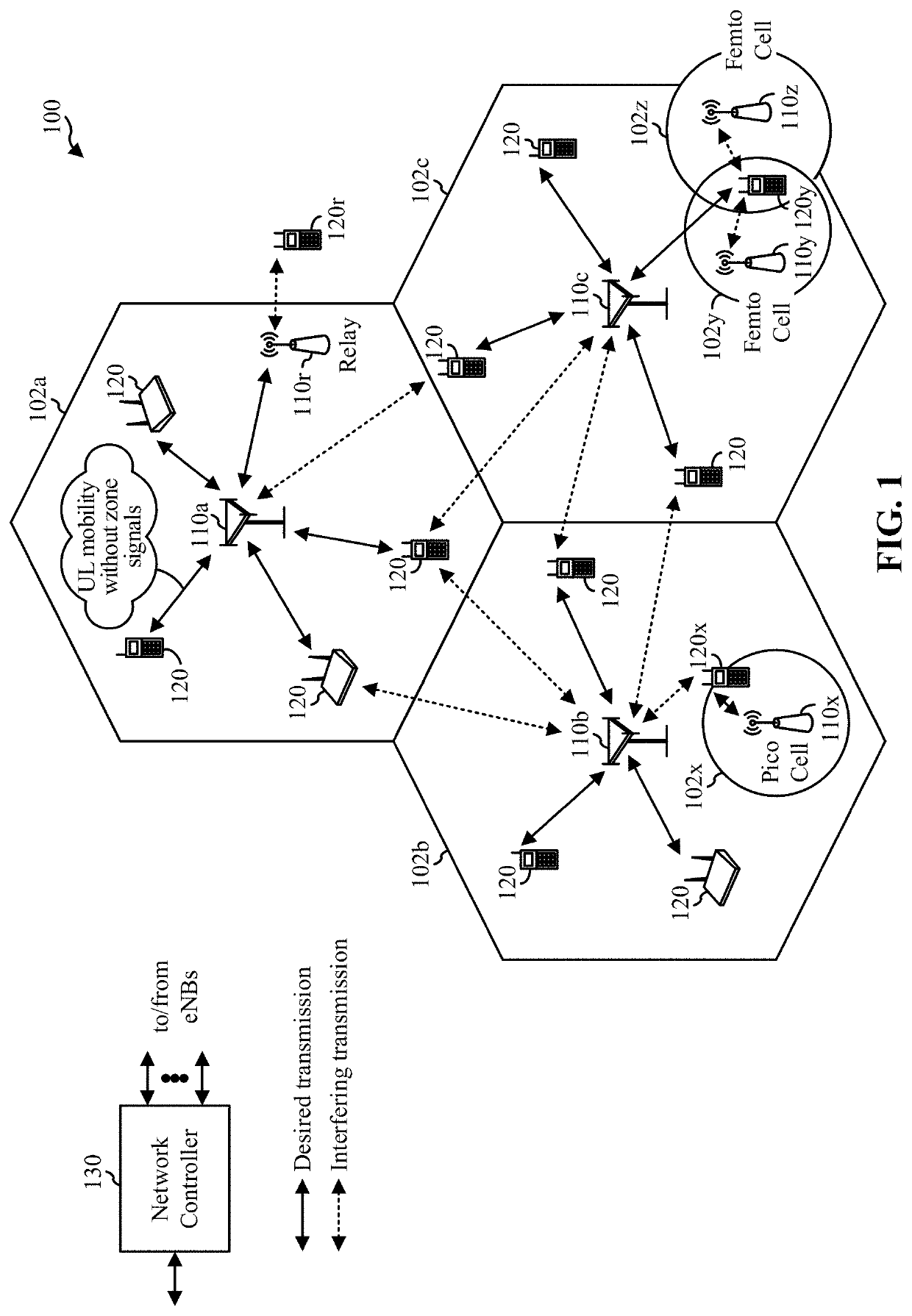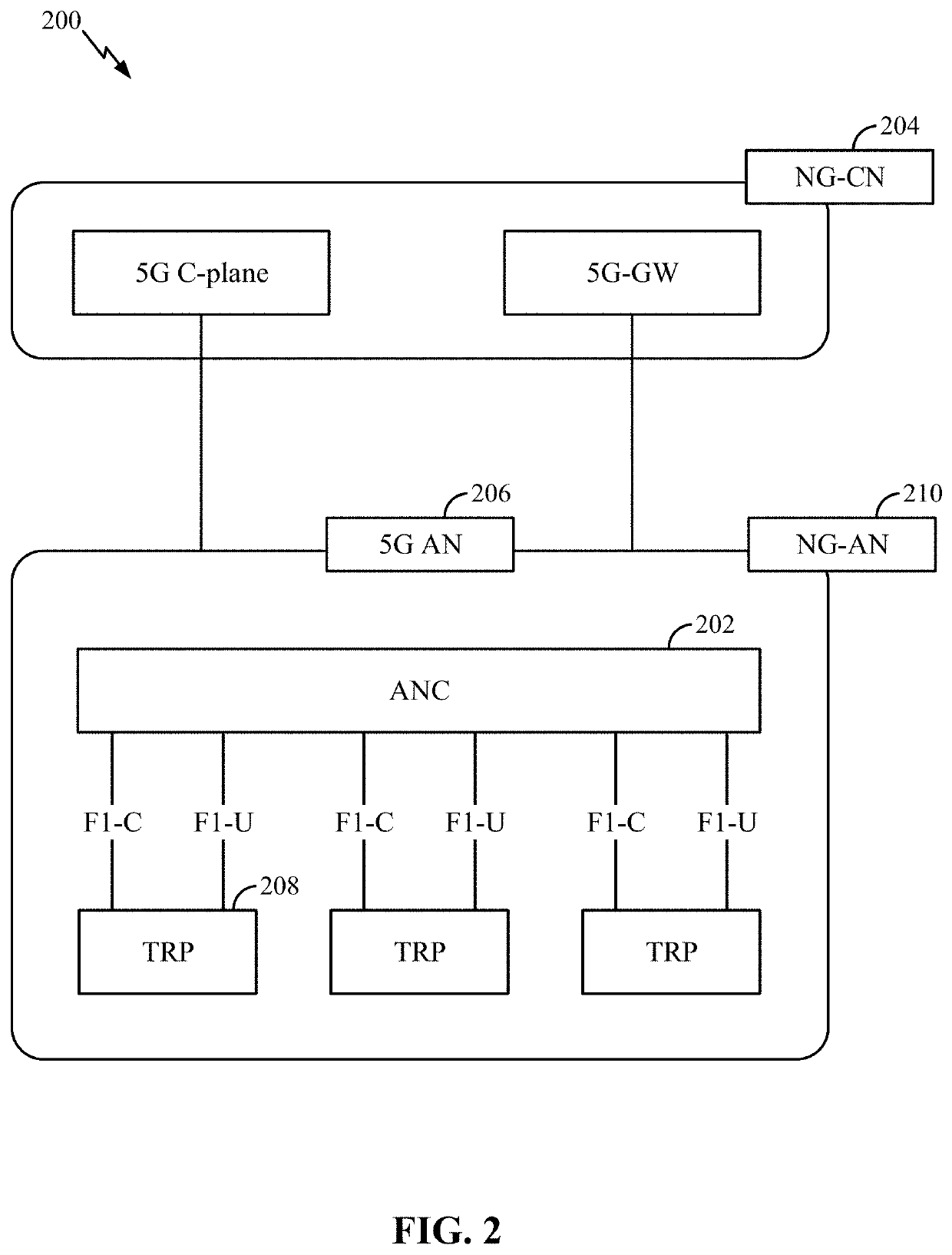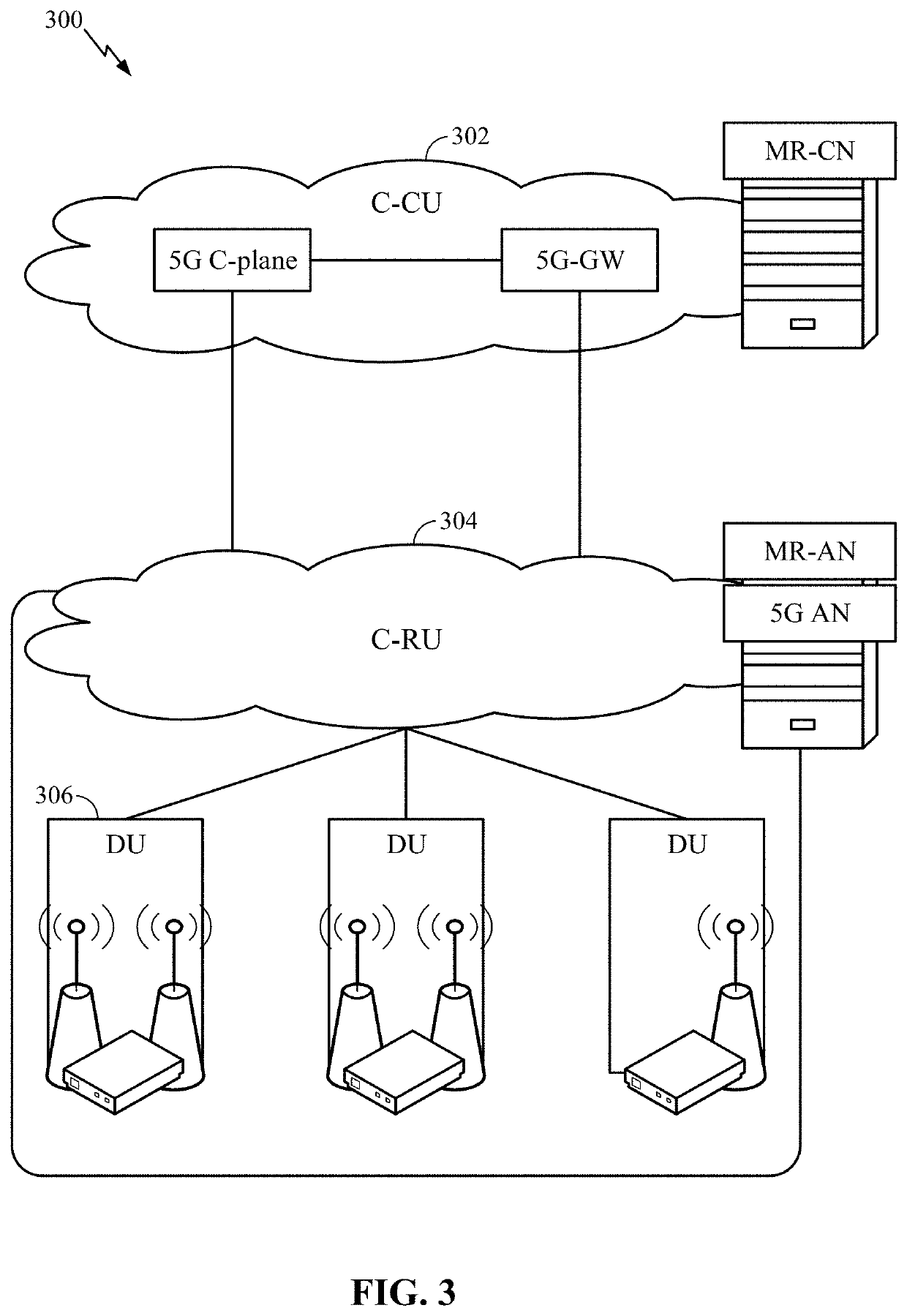Methods for radar coexistence
a radar and coexistence technology, applied in the field of radar coexistence, can solve problems such as degrading target detection performance, and achieve the effect of reducing the addition of chirps
- Summary
- Abstract
- Description
- Claims
- Application Information
AI Technical Summary
Benefits of technology
Problems solved by technology
Method used
Image
Examples
Embodiment Construction
[0047]In some wireless communications systems, such as 5th Generation (5G) New Radio (NR) systems, transmission waveforms may include cyclic prefix orthogonal frequency division multiplexing (CP-OFDM) and discrete Fourier transform-spread (DFT-S) OFDM. 5G allows for switching between both CP-OFDM and DFT-S-OFDM on the uplink (UL) to get the multiple input multiple output (MIMO) spatial multiplexing benefit of CP-OFDM and the link budget benefit of DFT-S-OFDM. With Long Term Evolution (LTE), orthogonal frequency division multiple access (OFDMA) communication signals may be used for downlink (DL) communications, while single-carrier frequency division multiple access (SC-FDMA) communication signals may be used for LTE UL communications. The DFT-s-OFDMA scheme spreads a set of data symbols (i.e., a data symbol sequence) over a frequency domain which is different from the OFDMA scheme. Also, in comparison to the OFDMA scheme, the DFT-s-OFDMA scheme can greatly reduce the peak to average...
PUM
 Login to View More
Login to View More Abstract
Description
Claims
Application Information
 Login to View More
Login to View More - R&D
- Intellectual Property
- Life Sciences
- Materials
- Tech Scout
- Unparalleled Data Quality
- Higher Quality Content
- 60% Fewer Hallucinations
Browse by: Latest US Patents, China's latest patents, Technical Efficacy Thesaurus, Application Domain, Technology Topic, Popular Technical Reports.
© 2025 PatSnap. All rights reserved.Legal|Privacy policy|Modern Slavery Act Transparency Statement|Sitemap|About US| Contact US: help@patsnap.com



